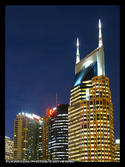Several countries with the largest Vietnamese populations today – United States, Canada and Australia – did not have such communities until after the Vietnam War. France, the largest non-English speaking community in the Vietnamese diaspora with about 300,000 strong, illustrates a much more complex tapestry of Vietnamese immigration that started well before the Fall of Saigon in 1975. read more »
Demographics
A Divided Vietnamese Community in France and Its Political Repercussions
- Login to post comments
America’s Burgeoning Class War Could Spell Opportunity For GOP
Last week’s disappointing job reports, with unemployment rising above 9%, only reinforced an emerging reality that few politicians, in either party, are ready to address. American society is becoming feudalized, with increasingly impregnable walls between the classes. This is ironic for a nation largely defined by its opportunity for upward mobility and fluid class structure. read more »
A Guide to China’s Rising Urban Areas
From a Rural to Urban Dispersion in the Middle Kingdom
China’s rise to economic prominence over the past 30 years has rested in large part to its rapid urbanization. Prior to ‘reform and opening up’ that started in earnest during the 1970s, cities in China were viewed as pariahs by the party leadership. Millions of young urban dwellers were forced into the countryside to labor on farming communes during the Cultural Revolution. In stark contrast, today millions of rural migrants make their way to the city. read more »
The Costs of Smart Growth Revisited: A 40 Year Perspective
"Soaring" land and house prices "certainly represent the biggest single failure" of smart growth, which has contributed to an increase in prices that is unprecedented in history. This finding could well have been from our new The Housing Crash and Smart Growth, but this observation was made by one of the world's leading urbanologists, Sir Peter Hall, in a classic work 40 years ago. read more »
The Next Boom Towns In The U.S.
What cities are best positioned to grow and prosper in the coming decade?
To determine the next boom towns in the U.S., with the help of Mark Schill at the Praxis Strategy Group, we took the 52 largest metro areas in the country (those with populations exceeding 1 million) and ranked them based on various data indicating past, present and future vitality. read more »
Living and Working in the 1099 Economy
We used to call it “Free Agent Nation.” Now, it seems like the new term of art will be “The 1099 Economy.” While the names may change, they all point to a phenomenon of rising importance: the growing number of Americans who don’t have a “regular job” but instead work on individual contracts with employers or customers. These folks don’t get the traditional W-2 paystub at the end of the year; they report their taxes with the IRS form 1099. read more »
The Evolving Urban Area: Seattle
Lunching at Seattle's Space Needle, the casual observer might imagine that one of the nation's most dense urban areas is spread out below. To the immediate south of the Space Needle is one of the nation's premier downtown areas. In 2000 downtown Seattle had the seventh largest employment base in the country and was one of the most dense. Its impressive, closely packed buildings witness a storied past. read more »
Will J.R. Recognize the New Dallas?
In the sixties and seventies, Dallas’s prime tourist attraction was an assassination site. The town seriously needed a new image. It got one in a soap opera that revealed a city besieged by blonds, big hair and big homes. “Dallas,” which premiered in 1978, did for Big D what “Sex in the City” and “Seinfeld” did for New York: it painted a portrait of the city for the world. read more »
Outlawing New Houses in California
UCLA's most recent Anderson Forecast indicates that there has been a significant shift in demand in California toward condominiums and apartments. The Anderson Forecast concludes that this will cause problems, such as slower growth in construction employment because building multi-unit dwellings creates less employment than building the detached houses that predominate throughout California and most of the nation. read more »
Enterprising States: Hard choices now, hard work ahead: State Strategies to Renew Growth and Create Jobs
This is an excerpt from "Enterprising States: Creating Jobs, Economic Development, and Prosperity in Challenging Times" authored by Praxis Strategy Group and Joel Kotkin. The entire report is available at the National Chamber Foundation website, including highlights of top performing states and profiles of each state's economic development efforts.
- Login to post comments





















